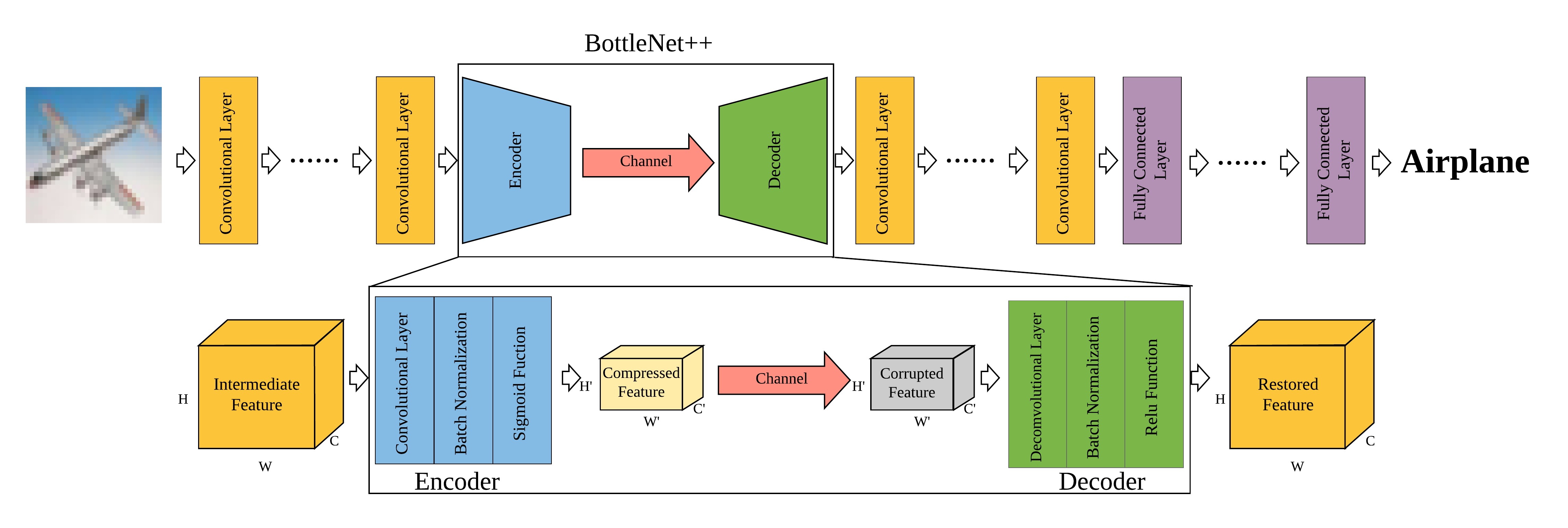BottleNet++: An End-to-End Approach for Feature Compression in Device-Edge Co-Inference Systems
The emergence of various intelligent mobile applications demands the deployment of powerful deep learning models at resource-constrained mobile devices. The device-edge co-inference framework provides a promising solution by splitting a neural network at a mobile device and an edge computing server. In order to balance the on-device computation and the communication overhead, the splitting point needs to be carefully picked, while the intermediate feature needs to be compressed before transmission. Existing studies decoupled the design of model splitting, feature compression, and communication, which may lead to excessive resource consumption of the mobile device. In this paper, we introduce an end-to-end architecture, named BottleNet++, that consists of an encoder, a non-trainable channel layer, and a decoder for more efficient feature compression and transmission. The encoder and decoder essentially implement joint source-channel coding via convolutional neural networks (CNNs), while explicitly considering the effect of channel noise. By exploiting the strong sparsity and the fault-tolerant property of the intermediate feature in a deep neural network (DNN), BottleNet++ achieves a much higher compression ratio than existing methods. Furthermore, by providing the channel condition to the encoder as an input, our method enjoys a strong generalization ability in different channel conditions. Compared with merely transmitting intermediate data without feature compression, BottleNet++ achieves up to 64x bandwidth reduction over the additive white Gaussian noise channel and up to 256x bit compression ratio in the binary erasure channel, with less than 2% reduction in accuracy. With a higher compression ratio, BottleNet++ enables splitting a DNN at earlier layers, which leads to up to 3x reduction in on-device computation compared with other compression methods.
PDF Abstract


 CIFAR-100
CIFAR-100